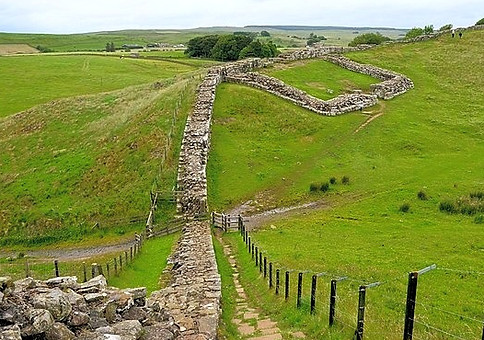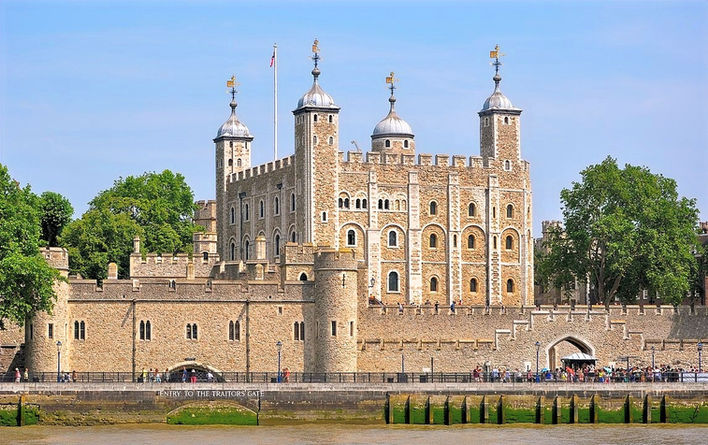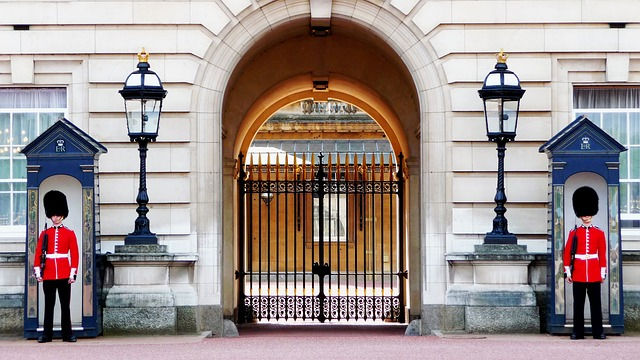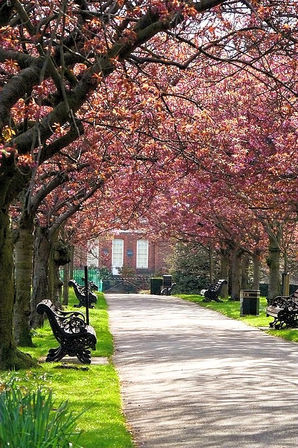
England
England is divided into nine separate regions, each of which has its own unique culture, history, and atmosphere – from the charming villages of Cornwall and beautiful rolling hills in the Cotswolds, to the dramatic coastline in the North East and the bustling city life in London, England has it all!
Here are some of the very best attractions you definitely shouldn’t miss.
London
The national capital, and also the capital city of England, it is one of Europe’s trendiest capital. Famous landmarks include the Houses of Parliament and Big Ben beside the Thames River, Westminster Abbey, Piccadilly Circus, the Changing of the Guard at Buckingham Palace, Tower Bridge and the Tower of London, one of the world's most famous and spectacular fortresses , and the Yeoman Warders of Her Majesty's Royal Palace and Fortress popularly known as Beefeaters. Kings and queens of England have stored crowns, robes, and other items of their ceremonial regalia at the Tower of London for over 600 years. Since the 1600s, the coronation regalia itself, commonly known as the 'Crown Jewels' have been protected at the Tower.

By PRA - wikimedia.org, CC BY-SA 3.0
Bath
A UNESCO World Heritage Site since 1987, it is a beautiful Georgian city with finest Georgian architecture , delightful crescents and terraces. The Roman Baths, unbelievably well preserved remains of one of the greatest religious spas of the ancient world, constructed over Britain's only natural hot water spring nearly 2,000 years ago.
Admire the Bath Abbey and the much-photographed romantic Pulteney Bridge, overlooking the river Avon. Marveled at the Royal Crescent, one of Bath’s most iconic landmarks, forms a sweeping crescent. Today, it is home to the five-star hotel.
Cambridge
World’s most famous universities where famous alumni studied, from Prince Charles, Sir Isaac Newton and Stephen Hawking.
Visit the university from a different perspective with guided punting tour. Get a deeper sense of the history of this university town from the knowledgeable guide as you admire the Bridge of Sighs, The Mathematical Bridge, New Court St Johns and Clare Bridge.
Canterbury
Canterbury is home to the most historic buildings in Britain, from the 6th Century. The iconic Canterbury Cathedral, St. Martin's Church and St Augustine's Abbey form a UNESCO World Heritage Site since 1988.
Like many other cities in England, Canterbury can trace its origins all the way back to Roman times. The city is still partially enclosed by the wall and sits on the shore of the River Stour. For history buffs , check out the pieces of the original wall uncovered in excavations at the former Queningate. Visit Canterbury and discover why this beautiful, ancient city is one of the jewels in England!
The Cotswold
Home to some of the most unspoilt, beautiful green landscape, charming villages and honey-colored stone cottages. These honey-colored stone cottages are nowhere else in the world. It really is a unique experience! Some of the prettiest Cotswolds villages to explore are Bourton-on-the-Water, Bibury, Chipping Campden, Stow-on-the-Wold and Moreton-in-Marsh.
Dorset and East Devon Coast
Dorset and East Devon Coast is a natural UNESCO World Heritage Site inscribed in 2001, for the outstanding universal value of its rocks, fossils and landforms. It is commonly known as the Jurassic Coast, located along the English Channel, begins in Exmouth and ends in Swanage, Dorset, with a total length span of 155 km.
The cliffs that make up the Dorset and Devon coast are an important site for fossils and provide a continuous record of life on land and in the sea in the area since 185 million years ago.The beach with its secluded cove and inviting waters, is the perfect place to take in the sight of this beautiful natural wonder.

Durdle Door, Dorset. An ancient limestone arch jutting out into the sea.
By Saffron Blaze - wikimedia.org, CC BY-SA 3.0
Durham
The city of Durham lies on the River Wear, and is well known for its Norman cathedral and 11th-century castle.
Durham Castle
Perching on top rocky promontory above the leafy River Wear , overlooking the medieval city huddled below, the Durham Castle is a fortified Norman castle, built by William the Conqueror , six years after the Norman conquest England. The Castle was constructed to keep the bishop safe from the attacks of assailants. Now it has been occupied by University College since 1837. Designated as a cultural World Heritage Site since 1986, the Durham Castle is open to public but only through guided tours is allowed in the Castle, since it is in use as a working building and home to over 100 students.
Durham Cathedral
Durham Cathedral is the largest and finest example of Norman architecture in England, located opposite the Castle. It is a Christian Church of the Anglican Communion and the seat of the Bishop of Durham. Together with the Castle, it was listed as a UNESCO World Heritage Site.
Greenwich
Greenwich is home to UNESCO World Heritage Site, symbolize English artistic and scientific endeavour in the 17th and 18th centuries. The Royal Observatory is where the understanding of astronomy and navigation were developed, the Prime Meridian Line of the World, where east meets west at Longitude 0°.
Other wonders include The O2 Arena where you can climb over the roof of the world’s most popular entertainment venue, National Maritime Museum houses the Britain’s momentous naval history. Browse designer-maker arts and crafts in Greenwich Market, or follow the footsteps of England’s kings and queens with a walk through ancient tree avenues in the Royal Park.
Hadrian’s Wall
Hadrian's Wall is located near the border between modern-day Scotland and England. Built by the Romans in AD 122, Hadrian’s Wall is the most famous of all the frontiers of the Roman empire. It was originally built to separate the barbarians from the Romans, but now is a unique, must-see monument surrounded by an extraordinary landscape It runs in an east-west direction, from Wallsend and Newcastle on the River Tyne in the east, to Bowness-on-Solway on Solway Firthin the west.


By Carole Raddato-wikimedia.org, CC BY 2.0
Lake District
Lake District National Park, listed as UNESCO World heritage Sites in 2017, welcomes visitors with vistas of rugged mountains, dazzling lakes and picturesque scenery created by Mother Nature! It has inspired countless artists, poets, and writers over the centuries.
Liverpool
A maritime city in northwest England, where the River Mersey meets the Irish Sea. Best known as the home of the Beatles!
The Liverpool Maritime Mercantile City, a UNESCO designated World Heritage Site in 2004, comprises six locations in the city centre including the Pier Head, Albert Dock, The Stanley Dock Conservation Area, William Brown Street Conservation Area, Castle Street Conservation Area and Duke Street Conservation Area, that includes many of the city's most famous landmarks.
Albert Dock
The Albert Dock is a complex of dock buildings and warehouses located to the south of the Pier Head, opened in 1846. The Albert Dock warehouses were the first in the world to be entirely fireproof, due to their construction from only iron, brick and stone, with no structural wood. It is now home to Tate Liverpool, Merseyside Maritime Museum and The Beatles Story Museum.
Stanley Dock
The largest and most complete system of historic docks anywhere in the world, opened on 4th August 1848. This site consists of several docks including Stanley, Collingwood, Salisbury, Clarence Graving Dock, and the massive dock boundary wall, the Leeds and Liverpool Canal locks.
At the time of construction in 1901, the spectacular Stanley Dock Tobacco Warehouse was reported to be the world’s largest brick warehouse. Next outstanding monument is the Victoria Tower, constructed between 1847 and 1848 to commemorate the opening of Salisbury Dock. Today much of the Stanley Dock conservation area is owned privately.
William Brown Street Conservation Area
The William Brown street area is the central point for many of Liverpool's civic buildings forming a so-called 'cultural quarter'. Amongst the buildings that are focal to this part of the WHS are St George's Hall, Lime Street station, the Walker Art Gallery, the World Museum Liverpool, the former Great North Western Hotel and the entrance the Queensway Tunnel.
Castle Street Conservation Area
Known also as the Commercial District, it is Liverpool medieval area, including Castle Street dominated by Georgian and Victorian architectural splendour along Castle Street, Dale Street , Victoria Street, Water Street and Old Hall Street conservation area. The area was included in WHS for its street development over three centuries and the grandeur of its architecture, sculpture and monuments, representing the pinnacle of the British Empire’s trading prowess. Some of the popular buildings include Town Hall, Martins Bank, India Building , Tower Building, Oriel Chambers and 16 Cook Street,
Duke Street Conservation Area
The area is known as Ropewalks, because of large number of roperies present in the area when Liverpool was one of the busiest ports in the world during the 18th and 19th centuries. The Bluecoat Chambers, The Royal Institution, The Old Bridewell, patchwork of merchants’ houses and warehouses are some important monuments in Duke Street conservation area.
Manchester
A truly captivating city. It’s UK’s second largest city, once known as Cottonopolis during the time of the Industrial Revolution, and was even the place where the world’s first ever computer was put together. Home to two of the biggest football teams, Manchester City and Manchester United. The city is also credited with the founding of the world’s first professional football league.
Newcastle
Newcastle upon Tyne commonly known as Newcastle is a city in the North East of England, situated on the northern bank of the River Tyne. The city developed as a centre for the wool trade then became a major coal mining area. But today, it is largely a business and cultural centre, with a particular reputation for its nightlife.
The port developed in the 16th century was amongst the world’s largest shipbuilding and ship-repairing centres. The harbor area is now a busy passenger terminus for ferries and cruise ships to Europe, as well as for boat trips around the city. Some famous sights include Newcastle Castle, The Tyne Bridges, Historic Quayside and Grainger Town. The Angel of the located in Gateshead, at 54m wide and 20m high, is believed to be the largest angel sculpture in the world.
Oxford
Home to the oldest university in the English speaking world, and with magnificent buildings in every style of English architecture from late Anglo-Saxon. The Bodleian Library and the Radcliffe Camera, main research library of the University, is one of the oldest libraries in Europe and is the second largest in Britain. The university buildings where most Britain’s elite receives their outstanding education.
Stonehenge
The mysterious Stonehenge, the magnificent World Heritage, with a collection of stones 5,000 years ago. This ancient stone circle is still a place of strong spiritual significance, and continues to capture the imagination of the many visitors. Why the stones were placed here and what purpose they served. Till today, it’s still an engineering wonder whose purpose remains a mystery. Was Stonehenge a religious temple? An astronomical clock? Or a burial ground? You shall decide! It was declared as a UNESCO Heritage Site since 1986.

By Pete Linforth - Pixabay
Stratford-upon-Avon
Hometown and final resting place of Stratford’s most famous son, William Shakespeare.

York
One of the charming cities in England, York is like stepping back into medieval times, with its winding cobbled streets, magnificent cathedral, the overhanging timber-framed houses , traditional shop fronts of The Shambles and dramatic medieval stone walls surrounding the city, made it one of the UK’s most historic and picturesque city. It has the best preserved city walls in England. Walking along the walls is a great way to orientate yourself and get a sense of the city. There’s a great view of the York’s Minster from the section between the River Ouse and Mickelgate.
Yorkshire
Saltaire, Shipley, West Yorkshire
Named after Sir Titus Salt who built a textile mill, known as Salts Mill for his workers. An ideal industrial town, where workers could live, study, and take care of themselves. Eventually, they were even buried here, at the local cemetery.
This village sits on the River Aire, it has beautiful Italian architecture and a rich history. Saltaire Village was designated a World Heritage Site by UNESCO in 2001.

Salts Mill from side of the bridge over the Leeds & Liverpool Canal

Cottages
By Foto43 - wikimedia.org, CC BY 2.0
By Roger May,-wikimedia.org, CC BY-SA 2.0
Studley Royal Park and Ruins of Fountains Abbey, North Yorkshire
Before the Dissolution of the Monasteries in the mid-16th century, Fountains Abbey was one of the largest and richest Cistercian abbeys in Britain and is one of only a few that survives from the 12th century. The later garden, which incorporates the abbey, survives to a large extent in its original design and influenced garden design in Europe. Both are a designated UNESCO World Heritage Sites since 1986.














































































































